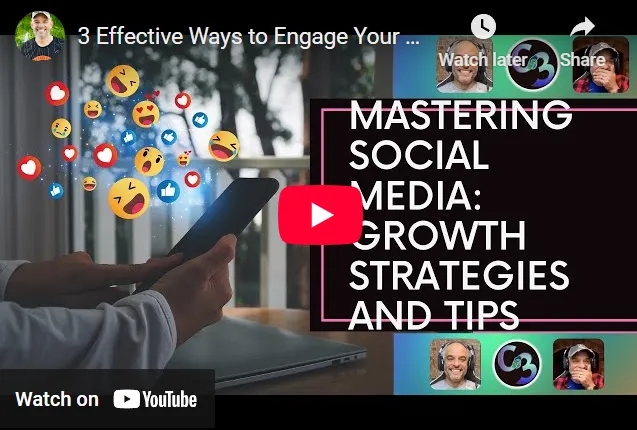Social Media Marketing for Podiatrists: What to Post and How to Engage Your Audience

In the current digital landscape, social media marketing has emerged as an essential tool for podiatrist marketing, helping practitioners connect with patients and expand their podiatry clinics. This article examines the fundamentals of social media marketing, its significance for podiatrists, and the criteria for selecting the most appropriate platforms for their practices. Additionally, it addresses effective content types to share, strategies for audience engagement, including creative content and informational posts, and best practices to enhance online presence through social media platforms. Explore how to leverage the power of social media to elevate your podiatry practice.
Key Takeaways:
- Social media marketing is the use of social media platforms to connect with and engage your target audience.
- Engaging your target audience on social media can help establish your podiatry practice, enhance brand awareness, and attract new patients.
- To effectively engage your audience, choose the right platforms, post a variety of content, and utilize best practices like consistency and hashtags.
What Is Social Media Marketing?
Social media marketing is a digital marketing strategy that employs social media platforms such as Facebook, Instagram, Twitter, LinkedIn, and TikTok to promote products, services, and brands, while also encouraging interactions and engagement with users.
This strategy encompasses a variety of marketing approaches, including content marketing, community engagement, and branding initiatives, all aimed at enhancing a brand’s online presence.
By utilizing visually appealing content, such as short videos and informative posts, businesses can effectively communicate with their target audience, thereby improving engagement rates and driving web traffic.
As social media continues to evolve, it is imperative to understand the dynamics of these platforms in order to build trust and facilitate conversions.
Why Is Social Media Marketing Important for Podiatrists?
Social media marketing is essential for podiatrists as it enhances the visibility of their podiatry clinics, establishes brand awareness, and facilitates effective patient engagement through creative content and strategic online marketing.
By implementing targeted marketing strategies, podiatrists can improve their online presence, attract new patients, and foster relationships with existing ones.
This marketing approach allows for the dissemination of valuable patient testimonials, educational content, and promotional posts which are vital in building trust and establishing a robust social media presence that resonates with potential clients.
Furthermore, social media provides a convenient platform for healthcare providers to promote online bookings and advance patient education, solidifying its role as a critical component of contemporary podiatrist marketing.
How to Choose the Right Social Media Platforms for Your Podiatry Practice?
Selecting the appropriate social media platforms for a podiatry practice is essential for optimizing marketing strategies and maximizing patient engagement. This process necessitates a thorough understanding of the target audience’s preferences, behaviors, and demographics to develop effective content that resonates with them.
Various platforms, including Facebook, Instagram, Twitter, and TikTok, each serve distinct purposes and cater to different audiences, which can greatly influence the reach and effectiveness of promotional efforts. By meticulously evaluating the characteristics and user demographics of these platforms, podiatrists can enhance their online presence and establish meaningful connections with patients, ultimately improving the overall outcomes of their social media marketing initiatives.
1. Understanding Your Target Audience
Understanding the target audience is fundamental to effective social media marketing for podiatrists, as it directly impacts the type of content that is created and shared. By identifying the demographics, preferences, and needs of potential patients, podiatrists can tailor their marketing strategies to address specific concerns and interests.
This knowledge facilitates the development of engaging informational posts and patient education content that resonates with the audience. Encouraging community involvement can enhance trust and relatability, which are essential components in the patient journey and healthcare marketing.
To gain these insights, employing various methods such as surveys can yield direct feedback from both existing and potential patients. Demographic analysis further assists in understanding age ranges, geographic locations, and specific foot-related concerns prevalent within the community.
Engaging with community feedback through social media interactions and local forums provides valuable perspectives on the needs and preferences of potential patients.
By integrating these understandings into their marketing strategies, podiatrists can ensure that they effectively address the unique challenges faced by their audience. This approach results in more impactful and relevant messaging, ultimately driving engagement and fostering enduring patient relationships.
2. Researching the Most Popular Platforms for Your Target Audience
Researching the most popular social media platforms utilized by the target audience is essential for maximizing patient engagement and ensuring that marketing efforts yield optimal results. Each platform presents unique opportunities for healthcare providers to connect with patients; however, understanding where the audience allocates their time can significantly enhance the effectiveness of the social media strategy.
The use of analytics tools allows podiatrists to identify trends, preferences, and engagement levels across various platforms, thereby enabling them to adapt their content and track performance accordingly.
A thorough examination of demographic insights can reveal critical factors such as age, location, and interests, which are vital for crafting effective messaging. Additionally, engaging with patient feedback through comments and reviews can provide invaluable data that informs future marketing campaigns.
By analyzing the distinct features of each platform such as Instagrams emphasis on visual storytelling and Facebooks strengths in community-building healthcare marketers can develop customized content that resonates with their audience. Ultimately, investing time in this research not only enhances the understanding of patient behaviors but also supports data-driven decisions that lead to successful marketing strategies.
3. Evaluating the Features and Benefits of Each Platform
Evaluating the features and benefits of each social media platform is essential for podiatrists seeking to effectively engage with their audience and create impactful content. Different platforms provide a range of formats for sharing visual content, including short videos, images, and text posts, which can cater to diverse audience preferences and enhance overall engagement.
Platforms such as Instagram, Facebook, and TikTok are particularly advantageous for promoting health fairs and community events, while others like YouTube and LinkedIn may be more suitable for sharing patient testimonials or educational content, thereby facilitating a multifaceted approach to podiatrist marketing.
For example, TikTok has emerged as a vibrant platform that allows podiatrists to present quick foot care tips and showcase the latest products through engaging short clips, which are likely to resonate with younger demographics.
Additionally, Twitter’s concise character limit is conducive to real-time updates and prompt engagement with followers, making it an excellent option for disseminating industry news or addressing common foot-related inquiries. LinkedIn also holds significant value for podiatrists aiming to network with other healthcare professionals and share their expertise through detailed articles or posts.
By strategically leveraging these various platforms, podiatrists can not only enhance their brand presence but also cultivate a deeper connection with their community, ultimately driving appointment bookings and fostering patient loyalty.
What Types of Content Should Podiatrists Post on Social Media?
Podiatrists should prioritize the development of diverse forms of creative content and maintain a social media calendar to effectively engage their audience and promote their podiatric services on social media platforms.
This includes sharing patient testimonials, milestone posts, and informative posts that educate potential patients about common podiatric issues and available treatment options.
Furthermore, promotional content that highlights special offers, community involvement initiatives, or local SEO efforts can significantly enhance brand awareness and patient engagement, positioning the podiatrist ahead in healthcare competition.
Incorporating user-generated content, such as patient stories, experiences, and reviews, can also contribute to building trust and fostering a sense of community surrounding the podiatry practice, enhancing the overall social media presence.
1. Educational and Informative Content
Educational and informative content is essential for podiatrists aiming to establish their expertise and engage effectively with their audience on social media platforms. By offering valuable information regarding foot health, treatment options, and preventive care, podiatrists can enhance patient education and foster trust. This type of content not only informs potential patients but also positions the practice as a reputable source of knowledge within the healthcare community.
Employing various formats such as infographics, short videos, blog links, and even webinars can further augment engagement and reach, ensuring a comprehensive approach to online marketing.
Addressing prevalent concerns such as diabetic foot care, sports injuries, and appropriate footwear choices proves to be highly beneficial. Creating engaging quizzes or hosting webinars facilitates interactive learning, while podcasts can offer in-depth discussions on advanced topics.
By utilizing these diverse formats, podiatrists can reach a broader audience and encourage ongoing conversations about foot health, thereby enhancing patient engagement.
This form of educational outreach not only establishes the podiatrist’s authority in the field but also actively involves patients in their own care, ultimately leading to improved outcomes and heightened patient satisfaction.
2. Promotional Content
Promotional content is essential in a podiatrist’s social media strategy, as it effectively drives online bookings and enhances brand awareness. This type of content encompasses announcements regarding special offers, new podiatry services, or community events in which the practice is engaged. By leveraging social media insights, podiatrists can fine-tune their promotional efforts to better identify their target audience.
By providing valuable information alongside promotional materials, such as tips for foot health and common treatment options, podiatrists can adopt a comprehensive approach that not only informs but also engages their audience. It is crucial to maintain a balance between promotional and educational content, ensuring that followers feel informed and motivated to take action.
Incorporating patient testimonials can enhance the credibility of promotional efforts by showcasing real-life success stories. When developing these posts, utilizing relevant hashtags and local keywords can improve visibility, facilitating easier discovery of the practice by potential patients online.
Ultimately, the objective is to build trust and foster a strong rapport with the audience while effectively promoting the services offered.
3. Behind-the-Scenes Content
Behind-the-scenes content serves as an effective means for podiatrists to engage with their audience and humanize their practice. By sharing insights into daily operations, introducing team members, and highlighting community involvement initiatives, healthcare providers can cultivate a deeper relationship with their patients.
This form of creative content not only reflects the practice’s unique personality but also demonstrates a commitment to patient care and community service. By incorporating candid moments and narratives, podiatrists can effectively enhance patient engagement and foster trust.
For example, sharing videos of staff discussions focused on improving patient care or showcasing community outreach events can create relatable narratives for patients. This level of transparency helps to demystify healthcare practices, making podiatrists appear more approachable.
Furthermore, emphasizing patient success stories or featuring the expertise of team members through Q&A sessions promotes a sense of community and connection. By bridging the gap between clinical environments and everyday life, this strategy not only cultivates patient loyalty but also enhances the overall patient experience, ultimately leading to more meaningful relationships.
4. User-Generated Content
User-generated content, such as patient testimonials and reviews, represents a significant asset for podiatrists aiming to enhance their reputation and engage their audience on social media. This form of content offers genuine insights into patient experiences, thereby fostering trust and credibility.
By encouraging satisfied patients to share their narratives, podiatrists can effectively amplify their brand message and cultivate a sense of community. Incorporating user-generated content into social media platforms not only highlights the success of podiatric services but also improves overall engagement rates.
To maximize the effectiveness of user-generated content, practitioners may consider implementing strategic campaigns designed to motivate patients to share their experiences. Establishing a dedicated hashtag or organizing contests can encourage patients to contribute their stories. Podiatrists should actively engage with the shared content by liking, commenting, and resharing posts, which strengthens the connection between practitioners and their patients.
Furthermore, leveraging these testimonials in targeted advertising campaigns can significantly enhance the visibility of the services offered. Ultimately, the integration of user-generated content not only enriches social media marketing efforts but also creates a supportive environment in which patients feel valued and connected.
How to Engage Your Audience on Social Media?
Engaging with an audience on social media is crucial for podiatrists seeking to cultivate a loyal patient base and enhance their online presence.
Effective patient engagement strategies should include creating opportunities for interaction, such as community events, contests, or giveaways.
By fostering a two-way communication channel, podiatrists can obtain valuable feedback, establish trust, and create a sense of community among their patients.
A well-considered social media strategy that prioritizes engagement can result in elevated brand loyalty and the development of long-term patient relationships.
1. Responding to Comments and Messages
Responding to comments and messages constitutes a critical aspect of effective patient engagement on social media for podiatrists. By actively interacting with followers and addressing their inquiries or feedback, healthcare providers can demonstrate their commitment to patient care while fostering a positive online presence. Such interactions not only facilitate the establishment of trust and rapport but also yield valuable insights that can inform future content and strategic initiatives.
Adopting a responsive approach to communication cultivates a sense of community involvement and enhances patient relationships.
Timely responses convey that the practitioner values patient opinions and concerns, which significantly contributes to nurturing loyalty and satisfaction.
Best practices in this regard include:
- Personalizing replies
- Maintaining a friendly tone
- Addressing specific concerns raised by individuals
- Incorporating insights from platforms like Instagram, Facebook, Twitter, and LinkedIn to improve interaction strategies
Establishing clear protocols for responding to feedback can streamline communication and promote consistent engagement.
By encouraging open dialogue, practitioners contribute to an inclusive environment where patients feel comfortable sharing their experiences. This proactive communication fosters a loyal patient base, ultimately leading to improved health outcomes and increased visibility within the community.
2. Running Contests and Giveaways
Running contests and giveaways represents a highly effective strategy for podiatrists aiming to enhance patient engagement and expand their social media following. These interactive promotions stimulate participation and sharing, thereby increasing the reach of the podiatry practice’s promotional content. By offering relevant prizes or incentives, podiatrists can attract new followers, improve brand awareness, and generate excitement surrounding their services. Moreover, contests provide an opportunity for deeper engagement with patients by incorporating an element of creativity and enjoyment into the interaction.
To create a successful contest, podiatrists should begin by defining clear objectives and selecting appropriate platforms, such as Instagram or Facebook, where their target audience is most active.
Utilizing compelling visuals and concise messaging is essential for capturing attention effectively. For instance, a local practice might organize a ‘Foot Care Selfie’ contest, encouraging participants to display their favorite footwear while sharing foot care tips on platforms like Instagram, Facebook, or TikTok.
Best practices include establishing straightforward entry rules, promoting the contest through various channels, and timing the giveaway to align with relevant events or holidays.
In conclusion, the effective execution of these contests not only achieves higher engagement rates but also strengthens community relationships, thereby solidifying the practice’s reputation within the field.
3. Collaborating with Influencers
Collaborating with influencers represents a highly effective strategy for podiatrists aiming to enhance their marketing initiatives and increase patient engagement on social media platforms. By partnering with reputable figures within the healthcare sector or the local community, podiatrists can leverage these influencers’ followers and credibility to extend their reach to a broader audience. For more insights, check out this article on Social Media Marketing for Podiatrists: What to Post and How to Engage Your Audience.
Influencer marketing serves to humanize the practice, effectively showcasing services and generating authentic patient testimonials that resonate with potential clients. This collaboration not only enhances the podiatrist’s social media presence but also fosters positive relationships within the community. By incorporating branding strategies and SEO strategies, podiatrists can further increase the visibility and effectiveness of these campaigns.
Such partnerships can also contribute to increased trust among prospective patients, as influencers often share genuine experiences and relatable narratives that resonate deeply with their audience.
To identify appropriate influencers, podiatrists should seek individuals whose values align with their practice and who demonstrate a sincere interest in foot health or wellness. It is essential to ensure that selected influencers embody authenticity and relevance, as audiences are more likely to engage with content perceived as sincere.
Engaging with local health advocates, leveraging micro-influencers, and utilizing social media analytics can further assist in identifying the right partnerships to enhance overall patient engagement and awareness. Additionally, incorporating local SEO practices and utilizing platforms like NexHealth for patient reviews can amplify these efforts.
4. Hosting Q&A Sessions
Hosting Q&A sessions on social media presents an excellent opportunity for podiatrists to engage with their audience and provide valuable insights into foot health and podiatric services. These interactive sessions facilitate real-time questions from patients, fostering a sense of community involvement and promoting open communication.
By addressing common concerns and offering expert advice, podiatrists can enhance patient engagement while establishing their authority within the healthcare sector. Promoting these sessions on platforms like Instagram, Facebook, and Twitter in advance and encouraging participation can further amplify their effectiveness.
To effectively plan a Q&A session, it is essential to select a relevant topic that resonates with the interests and needs of the audience. Identifying the target audience and establishing a clear timeline, which includes promotional activities leading up to the event, is also crucial.
Utilizing various channels such as newsletters, social media posts, and community groups on LinkedIn and Facebook to disseminate information about the session will help maximize reach. During the event, actively encouraging audience participation by inviting questions through comments or direct messages is important.
Additionally, considering the implementation of incentives, such as special giveaways or discounts on services for participants, can motivate attendance and contribute to building a loyal community that is eager for expert knowledge and insights. Leveraging influencer marketing can further enhance engagement and reach a broader audience.
5. Sharing User-Generated Content
Sharing user-generated content, such as patient testimonials, serves as a highly effective method for podiatrists to enhance patient engagement and establish authentic connections on social media platforms.
By highlighting real experiences and positive outcomes, healthcare providers can foster trust and credibility within their communities.
This approach, in turn, encourages potential patients to seek care, knowing that others have faced similar challenges and successfully found relief.
To effectively prompt patients to share their stories, practices may consider implementing strategies such as:
- Hosting testimonial contests
- Offering incentives for submissions
- Requesting reviews at the conclusion of appointments
Additionally, creating a dedicated section on the practices website or social media pages for patient stories can inspire further contributions. Ultimately, this shared content cultivates a vibrant community atmosphere, making patients feel valued and connected, which in turn enhances their loyalty and satisfaction.
What Are Some Best Practices for Social Media Marketing for Podiatrists?
Implementing best practices for social media marketing is crucial for podiatrists seeking to enhance their online presence and maximize patient engagement. Consistency in posting, the use of high-quality visuals, and the application of analytics tools like those offered by NexHealth can significantly improve the effectiveness of a social media strategy.
By establishing a social media calendar, podiatrists can ensure the regular delivery of content, thereby keeping their audience informed and engaged. Furthermore, recognizing the importance of analytics enables healthcare providers to track performance, refine their strategies, and effectively respond to the preferences of their target audience.
1. Consistency in Posting Across Social Media Platforms
Consistency in posting on platforms like Instagram, TikTok, and YouTube is a fundamental component of effective social media marketing for podiatrists, as it has a direct influence on engagement rates and audience retention. By establishing a social media calendar, healthcare providers can schedule regular updates, ensuring that their content remains fresh and relevant. This practice not only keeps followers informed but also demonstrates the podiatrist’s commitment to their online community.
Consistent posting contributes to building anticipation and can enhance patient engagement and loyalty over time.
To create and maintain an effective social media calendar, practitioners should begin by identifying key dates related to foot health awareness, holidays, and special events that are pertinent to their audience. Utilizing scheduling tools can streamline this process, allowing for a balanced mix of informative posts, engaging visuals, and interactive content that resonates with followers.
Monitoring analytics is essential for evaluating which types of content perform best, which enables practitioners to adjust their strategy for maximizing impact. Ultimately, a well-structured approach to posting can cultivate a more vibrant online presence, fostering ongoing conversations with patients and prospective clients alike.
2. Use of High-Quality Visuals
The utilization of high-quality visuals is essential for podiatrists aiming to capture attention and enhance patient engagement on social media platforms. Engaging images, videos, and infographics not only elevate the appeal of posts but also reinforce branding strategies and convey a sense of professionalism. By investing in high-quality visual content, podiatrists can effectively communicate their messages and foster a positive perception of their practice.
The integration of compelling visuals into the social media strategy can significantly enhance engagement rates and develop a stronger connection with the audience.
To maximize the impact of visuals, podiatrists should concentrate on sourcing content that resonates with their target demographic. This may include:
- Patient testimonials
- Educational materials that illustrate proper foot care
- Behind-the-scenes images that showcase the practice
Tools such as Canva or Adobe Spark can facilitate the creation of customized graphics that align with branding objectives. Additionally, incorporating user-generated content further enhances authenticity and encourages community interaction.
Understanding the specific image dimensions required by each platform, whether it’s Instagram, Facebook, or LinkedIn, and employing consistent color schemes will ensure that visuals not only stand out but also reinforce brand identity, ultimately resulting in increased trust and patient loyalty.
3. Utilizing Hashtags
Utilizing hashtags effectively constitutes a powerful strategy for podiatrists seeking to enhance their social media marketing efforts and improve patient engagement. Hashtags can significantly increase the visibility and reach of posts, enabling podiatrists to connect with wider audiences and participate in relevant discussions.
By conducting research and implementing popular and pertinent hashtags within their marketing strategies, healthcare providers can ensure their content reaches individuals interested in podiatric services. Additionally, creating unique branded hashtags can foster a sense of community and encourage user-generated content.
It is essential for podiatrists to regularly analyze the performance of their selected hashtags, as trends can change rapidly in the digital landscape. Engaging with niche-specific hashtags, particularly those related to foot health or wellness, can lead to higher engagement rates and attract a more targeted audience.
A strategic combination of general and specific hashtags allows for broader yet meaningful outreach. Furthermore, incorporating local hashtags can help practitioners connect with the communities they serve, ultimately facilitating new patient inquiries.
By mastering the selection and utilization of hashtags, podiatrists can significantly enhance their online presence and drive more relevant traffic to their services.
4. Engaging with Other Accounts in the Podiatry Community
Engaging with other accounts in the podiatry community is an essential practice for podiatrists seeking to enhance their social media presence and promote collaboration. By interacting with fellow healthcare providers, industry professionals, and local organizations, podiatrists can establish valuable relationships that significantly amplify their marketing efforts. This involvement within the community can facilitate the sharing of content, cross-promotions, and increased visibility for all parties involved.
Additionally, engaging with others in the field not only enhances a practitioners credibility but also demonstrates a commitment to the broader healthcare community.
Building a robust network within the podiatry sector enables practitioners to remain informed about industry trends and best practices, as well as to exchange insights and resources that can benefit their practices. To cultivate these connections, podiatrists should actively participate in forums, join relevant online groups, and attend professional conferences where they can engage with peers in person.
Contributing meaningful content, such as research findings or treatment experiences, can initiate conversations and forge relationships founded on mutual support. Ultimately, fostering collaboration within the podiatry community not only enriches individual practices but also strengthens the profession as a whole.
5. Tracking and Analyzing Performance
Tracking and analyzing performance is essential for podiatrists aiming to optimize their social media marketing strategies and improve patient engagement.
By utilizing robust analytics tools such as Google Analytics, Hootsuite, or Sprout Social, healthcare providers can conduct in-depth evaluations of key performance indicators, including reach, impressions, and click-through rates. Incorporating SEO strategies and local SEO can further enhance the visibility of these posts.
For example, identifying which posts receive the highest levels of interaction can assist podiatrists in developing targeted content that directly addresses the concerns and interests of their patients.
Furthermore, insights into audience demographics enable the tailoring of messaging to specific groups, thereby enhancing engagement through the ability to identify the target audience. Regularly evaluating these metrics facilitates agile adjustments to strategies, ensuring that marketing initiatives remain dynamic and responsive to patient feedback and emerging trends.

Frequently Asked Questions
What is social media marketing and why is it important for podiatrists?
Social media marketing is the use of social media platforms like Facebook, Instagram, Twitter, TikTok, and LinkedIn to promote a product or service. For podiatrists, it is crucial as it allows them to reach a wider audience and engage with potential patients in a more personal and interactive way.
What types of content should podiatrists post on social media?
Podiatrists should post a mix of educational and informative content, such as tips for foot care and common foot problems, as well as promotional content, such as services offered and patient testimonials. Incorporating influencer marketing strategies can also enhance reach. It is also important to showcase the human side of the practice by sharing behind-the-scenes photos or introducing the team.
How often should podiatrists post on social media?
Consistency is key when it comes to social media marketing. Podiatrists should aim to post at least 2-3 times a week to maintain a presence on their chosen platforms. However it is important to find a posting frequency that works for the specific audience and platform.











